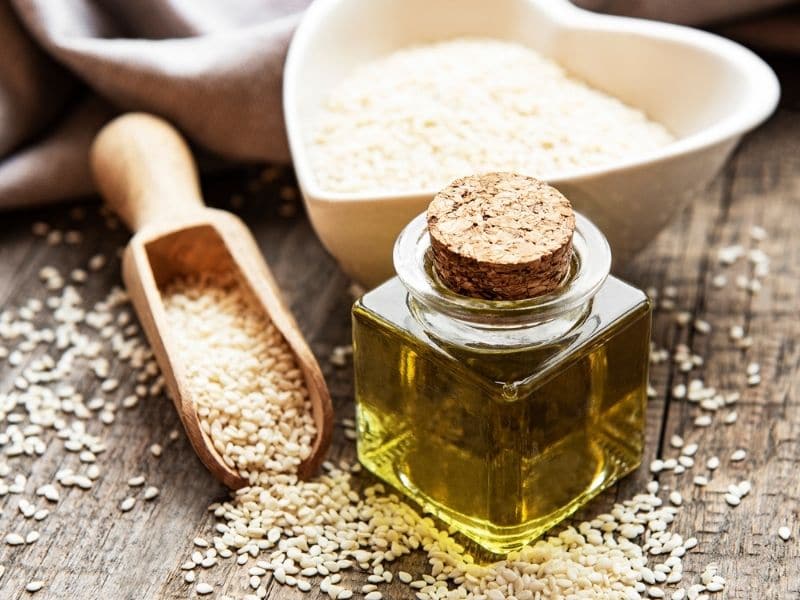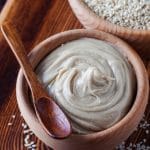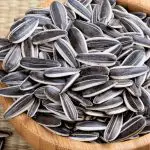Key points:
- If you need a substitute for sesame oil in your recipes, consider using alternatives such as olive oil, canola oil, coconut oil, sunflower oil, safflower oil, grapeseed oil, or avocado oil for cooking.
- For a toasted sesame flavor, use perilla oil, toasted sesame seeds, tahini, walnut oil, peanut oil, toasted peanuts, almond oil, or butter/ghee. Choose the substitute based on your dish’s purpose and flavor profile.
Oil is often thought of as a flavorless addition to cook food, however, many cooking oils are actually a major component in the flavor of dishes.
Roasted sesame oil has a strong flavor profile with delicious nutty, toasty and earthy tones. It is best known for its use in stir-fry, sesame chicken, fried rice, and other Asian dishes. With a shortage of sesame oil, you may have found it harder to find on grocery shelves as of late.
If you can’t find any, the good news is that there are a number of sesame oil substitutes you can use in your recipes instead.
There are a few things to consider when deciding on the best substitute. In this guide, we’ll help you choose the best option to ensure your dish doesn’t lose out on any flavor.
Before we explore the best substitutes for sesame oil, we need to differentiate between the different types of sesame oil your recipes call for and the purpose of each.
What is Sesame Oil?
Sesame oil is made from toasted, raw, or cold-pressed sesame seeds. It has a high smoke point and unlike some other cooking oils, it is unlikely to turn rancid when kept in the open.
This oil is most popular in Asian cuisine used as a seasoning, as a cooking medium, or to make sauces, dressings, dips, and pastes with chili. In South India, it is also used in curries mixed with spice powders.

Types of Sesame Oil
There are a few different sesame oil varieties. The most commonly used types are toasted or dark sesame oil and light sesame oil. Less commonly you can also find unrefined or cold-pressed oil as well as black sesame oil.
Each variety may serve a different purpose in your dish.
Toasted Sesame Oil
Dark or toasted sesame oil is golden or brown in color with an unmistakable and potent nutty flavor. This makes it a delicious flavor addition to stir fry, soups, and noodle dishes in the final stages of cooking.
Although it has a high smoke point at 450 F (232 C) it is not recommended to cook at high heat for long periods since the flavor will diminish.
Dark sesame oil is not suitable for deep frying. It is found in stores labeled as either ‘Sesame Oil’ or ‘Sesame Seed Oil’ and since it has a strong flavor only a small amount is needed to pack a punch.
Light Sesame Oil
Light sesame oil is typically untoasted and has a high smoke point (410 F/210 C). This oil is suitable for deep-frying with a milder flavor and lighter color than the toasted version. It is a great choice for sauteing, all-purpose cooking, high-heat searing, and frying.
Unrefined Sesame Oil
This type of oil is also referred to as cold-pressed, expeller pressed, or extra virgin sesame oil. It is untoasted and can be found in health food stores. With a medium smoking point, it can be used for sauteing and sauces but is also used in hair and skin products.
Black Sesame Oil
Made from black sesame seeds this oil is rich and nutty with a creamy texture. It can be purchased as toasted oil, suitable for cooking or cold-pressed which is extremely flavorful in salad dressings and used for health benefits as a herbal or natural remedy.
Homemade Sesame Oil
If you have sesame seeds, but no sesame oil, you can make your own sesame oil as a great flavor addition for meat, veggies, and noodles. Heat ¼ sesame seeds over very low heat in a pan on the stovetop.
Add 1 cup of neutral-flavored oil such as avocado, canola, or sunflower oil to the pan. Heat for 2 to 3 minutes over low heat. If the seeds start to brown, remove the pan from the heat immediately to prevent it from burning.
Blend the seed-oil mixture and allow it to cool for 2 to 3 hours. Strain and store in a clean container in the refrigerator for up to 2 weeks.
Your homemade version can be used in any recipe that calls for sesame oil measure for measure.

Choosing the Best Substitute for Sesame Oil
The best alternatives for sesame oil will depend on whether your recipe requires a neutral oil for cooking or a deeply flavored oil for taste. The lists below will help you determine which option will suit your recipe best.
Best Light Sesame Oil Alternative for Cooking
Replace the below options measure for measure in your recipe. These oils are best used as an alternative in cooking when the sesame flavor is not important in your dish.
These replacements lack the defined nutty taste of sesame oil. If desired, sprinkle some toasted sesame seeds or cashews into your dish for added flavor.
1. Olive Oil
Olive oil has a similar consistency to sesame oil. The flavor is somewhat different but still fairly neutral for dishes that include a variety of other ingredients. For the best match use light, virgin, or extra light olive oil.
Best for: Sauteing, pan-searing, frying, roasting, dressings, and baking.
2. Canola Oil
Canola oil has a similar smoke point to sesame oil and has a very neutral flavor making it suitable for most cooking applications whether sweet or savory. You probably already have this oil on hand and if you don’t it’s relatively easy to come by.
Best for: Sauteing, pan-searing, frying, deep-frying, roasting, and baking.
3. Coconut Oil
Coconut oil is best for low to medium temperature cooking and offers a light coconut taste.
Best for: Sauteing, frying, and some baking recipes.
4. Sunflower Oil
Similar to canola oil, sunflower oil is a neutral oil with little flavor. It is made from sunflower seeds and is ideal for high-heat cooking with a similar smoke point to sesame oil.
Best for: Baking, frying, deep-frying, and sauteing.
5. Safflower Oil
Made from the seeds of safflower plants, the oil has a mild aroma and flavor. It has similar properties to sunflower and canola oil which makes it a versatile ingredient for baking and cooking.
Best for: Baking, frying, deep-frying, and sauteing.
6. Grapeseed Oil
Grapeseed oil makes for a great flavor base, allowing other flavors to shine. It works well with any other flavor and is a great option when using pricier ingredients in your recipe.
Best for: Sauteing, pan-searing, frying, roasting, dressings, and baking.
7. Avocado Oil
Avocado oil adds a great richness and texture to dishes, even though it lacks the nutty flavor. If you are making your own sesame oil, avocado oil is a good selection for the base oil in the recipe.
Best for: Sauteing, pan-searing, frying, roasting, dressings, and baking.
Best Toasted Sesame Oil Substitute
The below oils are best used as an alternative in cooking when the sesame taste is a vital element in your dish. The substitutes will add a nutty taste, giving neutral flavors depth and richness.
#8. Perilla Oil
Perilla oil is the closest match to sesame oil. It is made from toasted or untoasted pressed perilla seeds. The oil has a unique nutty taste, sesame aroma, and a hint of licorice flavor.
Perilla oil may not be commonly available and is usually found at specialty Asian stores or markets. Substitute it measure for measure in your recipe.
Best for: Sauteing and dressings.
#9. Toasted Sesame Seeds
Toasted sesame seeds are a great way to bring the sesame flavor to your dish if you don’t have sesame oil on hand. Lightly toast the seeds in a skillet until golden and sprinkle them into your dish at the end of cooking.
Only use a small amount of toasted seeds since too many can easily overpower your dish. Use a neutral oil for preparing the rest of your recipe in this case.
Best for: Sprinkling as a garnish or mixing into cooked dishes before serving. Can be used with salads, stir fry, vegetables, meat, and baked items.
#10. Tahini (Sesame Paste)
Tahini is also made from sesame seeds, however, the raw seeds in this case are blended into a thick paste. You can mix tahini with a neutral-flavored oil and mix it into your dish as a finishing touch or use it in a dressing. Substitute ¾ tablespoon of tahini for 1 tablespoon of sesame oil.
Best for: Dressings, sautee, stir fry, or vegetables.
#11. Walnut Oil
Walnut oil has a mild nutty flavor. It has a low smoke point which makes it less ideal for cooking and better as a finishing touch or in dressings. Cooking with walnut oil at high heat can change its flavor to become more bitter.
Best for: Marinades, dressings, and as a flavor addition at the end of the cook.
#12. Peanut Oil
Peanut oil has a high smoke point and nutty flavor. This makes it great as a cooking oil and flavor enhancer.
Best for: Sautéing, frying, deep-frying, and stir-fry.
#13. Toasted Peanuts
For a real pop of nuttiness and additional texture, peanuts are an easy to come by option. Use them toasted or plain and add them roughly chopped to almost any Asian recipe. Ensure that those you are cooking for do not have any allergies to peanuts.
Best for: Sprinkling as a garnish or mixing into salads and cooked dishes before serving. Can be used with salads, stir fry, vegetables, meat, and baked items.
#14. Almond Oil
Almond oil has a high smoke point which makes it suitable for cooking, however, its flavor is not quite the same as sesame oil. It still adds a pleasant earthy taste ideal for stir-frying.
Best for: Sauteing, stir-frying, wok-frying, and dressings.
#15. Butter or Ghee (Clarified Butter)
Although butter does not have an inherently nutty or sesame-like taste, it can be slowly browned to give it nutty tones and a deeply rich flavor that is superb with meat and vegetables. It can be stirred into dishes towards the end of the cook to prevent the butter from becoming too dark.
Ghee has a higher smoke point than butter and can be used at higher cooking temperatures without the worry of it burning.
Best for: Sauteing, stir-fry, or baking.
FAQs
Conclusion
There are a host of options available if you’ve run out of sesame oil or can’t find any in-store. The alternative you choose will depend on the purpose of the oil in your recipe. To replicate the deep nutty flavor your best choice would be perilla oil or to make your own sesame oil.
For stir fry or cooking with a neutral, but high smoke-point oil, the best option to use as a replacement is virgin or light olive oil. For a little extra pizazz add a tablespoon of toasted seeds or nuts to your dish.
See more:
*image by Nopparatp&Almaje/depositphotos








